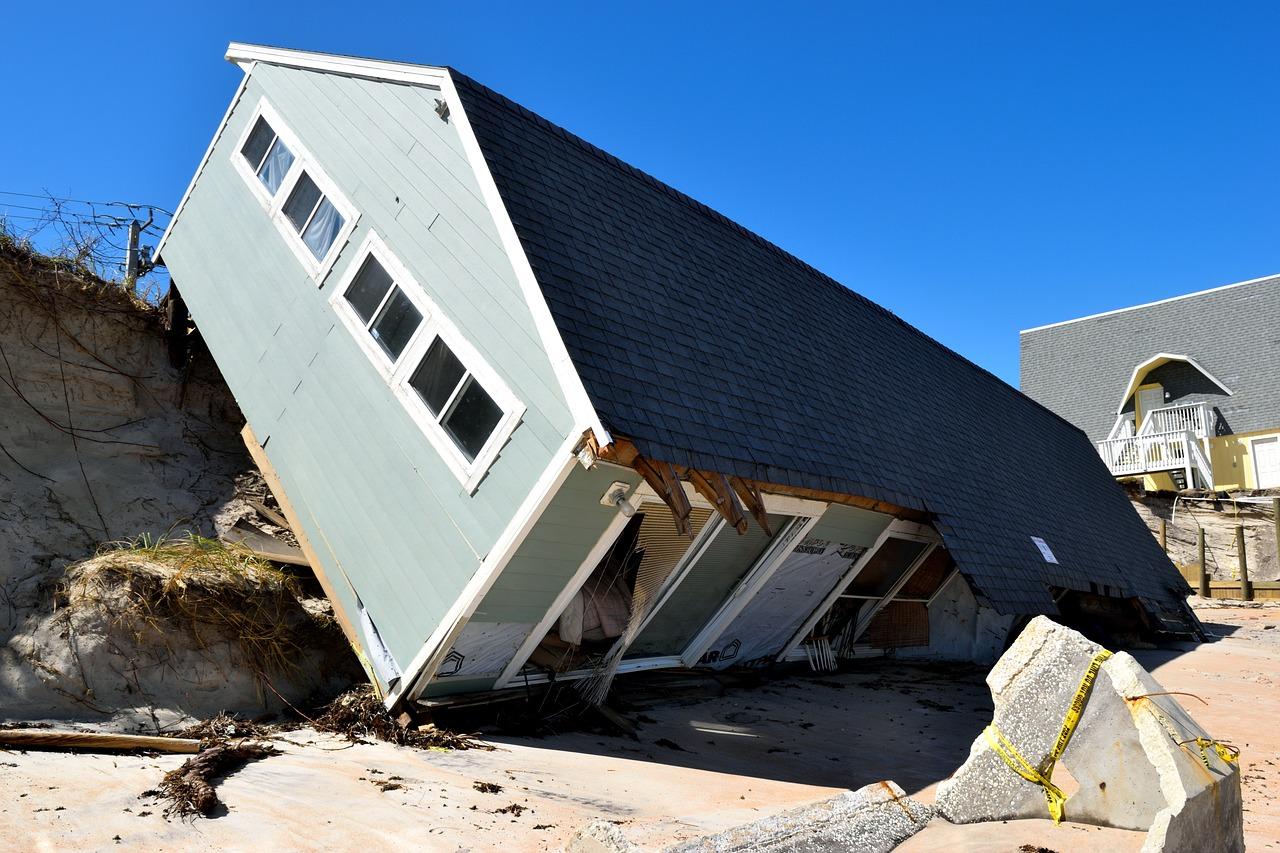
Risk of extreme weather and beliefs influence homeowners' risk mitigation action
As the climate changes, extreme weather events are also likely to increase. Acres burned in wildfires reported by The National Interagency Fire Center generally trend upward over the last decade, and The First Street Foundation projects that counties in the western United States in particular could see their annual risk of fire increase from 0.5-2.7% in 2020 to 0.5-6% in 2050, with some areas seeing annual risk increase nearly 500%. Similarly, flooding is expected to increase and current models may actually underestimate risks, especially in underserved areas. This provides challenges for governments, homeowners, and insurance companies.
In a national survey conducted by the Risk Institute and led by Research Fellow Brittany Shoots-Reinhard, a research assistant professor in the Department of Psychology at Ohio State, 1,102 American homeowners in August 2022 about their beliefs about extreme weather and actions that they'd taken to protect their homes. We used First Street Foundation's publicly available fire, heat, flood, and wind scores to create an index of actual risk by zip code for each participant.
Are people sensitive to their actual level of risk?
Perceptions of risk did correlate with actual level of risk but depended on the specific event. We asked people to rate how much risk 11 events posed for themselves and their homes. The correlations between risk perceptions and risk scores were small for wildfire (r = .11), heat (r = .17), and flooding (r = .12). While we didn't ask specifically about wind, objective wind scores were associated with risk perceptions for tornadoes (r = .17), severe storms/derecho (r = .20), and hurricanes (r = .49).
Thus, a great deal of perceived risk is left unexplained by objective risk. However, these low correlations indicate that other variables predict people's concern with extreme weather.
What influences people's risk perceptions besides where they live?
People who tended to see higher risk of one extreme weather event tended to have higher risk perceptions for other events, so we created an average of 11 events. People with higher risk perceptions were younger, more educated, and had lower income. Surprisingly, participants who were politically conservative were more concerned about extreme weather (they did not live in riskier areas).
We also asked people how fearful they were that their house would be damaged in the next three years.
Level of fearfulness about extreme weather damage (% at each level).
Participants were asked "How fearful are you that your home will be damaged by an extreme weather event or natural disaster in the next three years?"

Living in riskier areas was unrelated to fearfulness. Instead, as was the case for the risk across events, people who were younger, conservative, more educated and lower income were more fearful.
We also measured perceptions that extreme weather is increasing in their area and worry about global warming. Liberals were more likely to believe extreme weather is increasing and be worried about global warming. These beliefs in turn predict greater perceived risk and greater fear of damage, even though conservatives had higher risk perceptions and fearfulness overall. This suggests liberals risk perceptions are due to their beliefs about climate change.
How do risk and risk perceptions relate to action?
We asked participants whether they had taken specific actions to reduce their risk from extreme weather.
Percent of respondents who took specific actions to reduce risk.
Participants were asked "Have you considered any of the following actions to reduce your home's risk from an extreme weather event or natural disaster?"

We added up the actions that were taken to create an index of weatherizing. Greater income was the strongest predictor of having taken action to protect their houses. Expense was the key reason people gave for not protecting. The percentage of people who cited expense varied from 36% for trimming trees to around 50% for insulation and smart tech, to 60% for purchasing a generator and 65% for retrofitting. People who lived in fire-prone areas had taken more actions, but none of the other risk scores predicted action. In addition, those who were more fearful of extreme weather had taken more actions.
Although political ideology influenced risk and climate change perceptions, it was unrelated to action. This is probably because conservatives were more worried about extreme weather, but liberals were more worried about climate change—they may, therefore, have had different reasons for acting but were equally likely to act.
We also asked about whether participants had specialized coverage against flooding or earthquakes. Living in a flood prone area wasn't associated with having purchased specialized coverage, but fearfulness about extreme weather damage, worry about global warming, and perceptions that extreme weather events were increasing were all predictive of specialized coverage. Conservatives and those with more education were also more likely to have purchased specialized coverage.
Taken together, the results show that people's estimates of their personal level of risk are key predictors of protective actions against extreme weather. These estimates are based on the objective level of risk in their area but are also influenced by demographics and political beliefs. In addition, the results show that although conservatives do not believe that extreme weather is increasing and are not worried about climate change, these beliefs are not preventing them from protecting their property from extreme weather. In fact, despite their lower belief in climate change, they are more concerned about extreme weather than liberals. This could indicate that liberals are less concerned about extreme weather because they are more concerned about climate change, which includes more risks than just extreme weather.






